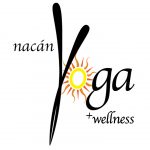Get Started with Yoga Today
Yoga is a lifestyle that will bring many benefits to you and your overall health.
faq's
The word yoga means union. It is an ancient physical and mental discipline that originated in India. This practice has different types, including Hatha yoga, Anusara yoga, Ashtanga yoga, Vinyasa yoga, Nidra yoga, Yin yoga, Bhakti yoga, Bikram yoga, Kundalini yoga, Iyengar yoga, Therapeutic yoga, Restorative yoga, among others.
Whichever style of Yoga you prefer, you should keep in mind that it should suit your needs and that you can enjoy it every time you practice it.
As a teacher of Hatha, Vinyasa, and Trauma Sensitive Yoga, I recommend Yoga for multiple reasons, as the constant practice will help you to maintain a good state of overall health, body, and mind in balance.
No matter what level you are at, by always listening to and respecting your body, you will be able to adapt your body, mind, and spirit to the good rhythm of your Yoga. This is created with a good foundation, consistency, and patience.
My job is to guide you and help you enjoy your practice and get the most out of it.
For your first session, we prepare and organize ourselves by reviewing your health history and what you want to achieve with your practice. From there, I strategically and meticulously design a plan of what your first sessions will be like and how they will personally benefit you.
Due to the postures and the complexity of many of them, you might have the mistaken belief that if you lack elasticity, yoga is not for you. As I mentioned earlier, yoga is much more than physical practice, it is a media practice as well. So, it is not an indispensable condition to be flexible in order to enjoy yoga. The flexibility you will gain over time and the consistency with which you do your practice.
Creating a routine for your yoga practice is easier than you think. If you wish to start or advance your practice with me, I personally offer in-home, at my Home Studio or online sessions for your convenience. I try my best to work around my students schedules.
Ideally it would be good to start 2 – 3 times a week, to give the body a chance to adapt.
Yes, there are several levels.
Level 1, has its focus on classes or sessions of mild intensity. They are designed for individuals who have no experience in yoga, or who have limited mobility or injury, or who simply want to relax their body and mind in a low intensity class.
Level 2, has its focus on classes or sessions of moderate intensity. These classes are structured for individuals who already have a basic yoga foundation or who have sufficient physical condition to enjoy a more rhythmic class.
Level 3, focuses on specialized classes or sessions where we delve into some type or specialty of yoga. They are designed for individuals with more experience practicing yoga, they are classes that generally require greater strength, flexibility, and physical condition.
Generally, instructors usually handle several levels in the same group class, especially when it is directed to the community, unless a level or type of yoga is specified beforehand.
You need comfortable and elastic clothing.
I provide all the necessary gear for you to have a comfortable and enjoyable session.
If we take yoga as a form of physical exercise only, I could say that the asanas (postures) in classical yoga are leisurely and meditative, although vinyasas such as Sun Salutations are dynamic sequences that also work the cardiovascular system. Being postures that stimulate and strengthen the body as a whole for how complete they are, they constitute a form of low-impact physical practice that also positively affects the mind.
Then we have to see the following, yoga exercises the body from the inside out, relaxes the mind, maintains the elasticity of the muscles, strengthens the elasticity of the arteries, provides flexibility to the spine, improves our posture, and some of its types like Vinyasa also exercises the cardiovascular system.
That is, the practice of asanas is a much more balanced, complete, and at the same time harmonious exercise.
In short, any low-impact exercise such as yoga could be perfectly adapted to any routine you are doing. I have worked with clients who only practice yoga, others combine it with running or walking, others with weightlifting, and so on.
If you have started doing yoga as a general wellness plan, intending to lose weight, or keeping fit, keep in mind that it must be accompanied by a healthy diet and lifestyle.
Healthy eating and good hydration are essential if you regularly practice or want to practice yoga.
You should know that while it is recommended that you do your practice on an empty stomach, it is also important that at least 1-2 hours have passed since your last meal. That way you can feel lighter during your practice. In the same way, stay well hydrated so that your muscles and joints move with the necessary elasticity during the session.
It is also highly recommended that you drink plenty of water after finishing your practice.
The best foods you can eat after doing yoga are easily digestible fruits and vegetables as they will help you hydrate your body and quench your appetite, carbohydrates to restore energy (as long as you have practiced early), nuts as they provide so much protein and carbohydrates, in addition to quenching your appetite.
Many sit down to meditate and notice a thousand thoughts that come and go. Usually, this happens when we start meditating, and eventually, as we practice more, this becomes more manageable. If you meditate daily, you will observe how your mind will be calmer and as the practice progresses an inner silence is achieved and thoughts take a more relaxed flow. Like in everything, it requires constant practice and patience.
